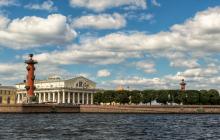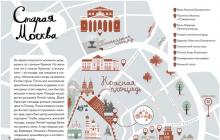Perhaps no other attraction suffers from tourist inattention as much as the rostral columns (St. Petersburg). I do not know how and how this can be explained, but very often the name is written through "a" instead of using the letter "o" as it should be. Don't do that, please. In this case, the rule about "-rast - / - dew-" does not work. Just remember that the word comes from the Latin rostrum (plural rostra), which means "the bow of the ship", so it is wrong to approach the question from the point of view of Russian grammar.
I apologize for this moment of indignation, but it really hurt. Moreover, I live on Vasilievsky Island and often visit the location of the rostral columns of St. Petersburg. In general, oddly enough, after moving from Veliky Novgorod, I feel the city on the Neva more as my home than my native land, although only three years have passed.
Sculptures of rostral columns - what and why
I think the time has come to tell in more detail what the rostral columns are for which St. Petersburg is known. I think everyone has heard that the sculptures of the rostral columns are the bows of the ships. Once in the Roman tradition, this was a clear confirmation of the strength of the navy, so the decorations were not artificial, but quite real trophies. Now, of course, all these are just decorative forms.
A traditional short historical excursion: what is now an architectural decoration of the spit of Vasilievsky Island, at the beginning of its existence had an important functional significance. These were giant lanterns by the standards of 1810, which, in the dark and foggy weather, indicated to the ships the entrance to the Bolshaya and Malaya Neva. Actually, for this, the whole building was conceived. Until the end of the century, hemp oil was used as a fuel, then electricity, and in the 1950s it was replaced by natural gas. From that moment on, these port lamps ceased to be regularly used for their initial practical purpose and were limited to the role of urban decoration, which they still play today, half a century later.
This calling card of Peter is the brainchild of French minds. The project of the 32-meter-high structure was developed by the architect Tom de Thomon, and the authors of the models of the human figures at the foot were the sculptors Camberlain and Thibault. True, the famous Russian stonecutter Samson Sukhanov had a hand in the implementation of the plan.

The time when the rostral columns are lit
Of course, the guests of the Northern capital are waiting for the moment when the Vasileostrovsky rostral columns are lit. But everything is not so simple here: due to the fact that the structure was developed and built at the very beginning of the 19th century, they literally light up - with open fire. Now it is unsafe and unacceptable in the city, so this happens only on major holidays such as the round anniversaries of Victory Day. The rest of the time, in the dark, artistic illumination is simply turned on.
Rostral columns, St. Petersburg, and what else?
Rostral columns in St. Petersburg are not just a monument to themselves, but part of the composition of the Exchange Square. This look is considered so classic that it often appears on postcards. Perhaps this is generally one of the first pictures that come to mind when you start thinking about the Northern capital.
Accordingly, a whole range of cultural objects deserves attention around them. Here you can find the building of the Twelve Colleges, the Kunstkamera, and the houses of noble families like the Demidovs and Naryshkins. The choice is great, and you may have to spend more than one day to inspect everything, and in order to talk about it, you will need more than one post.



